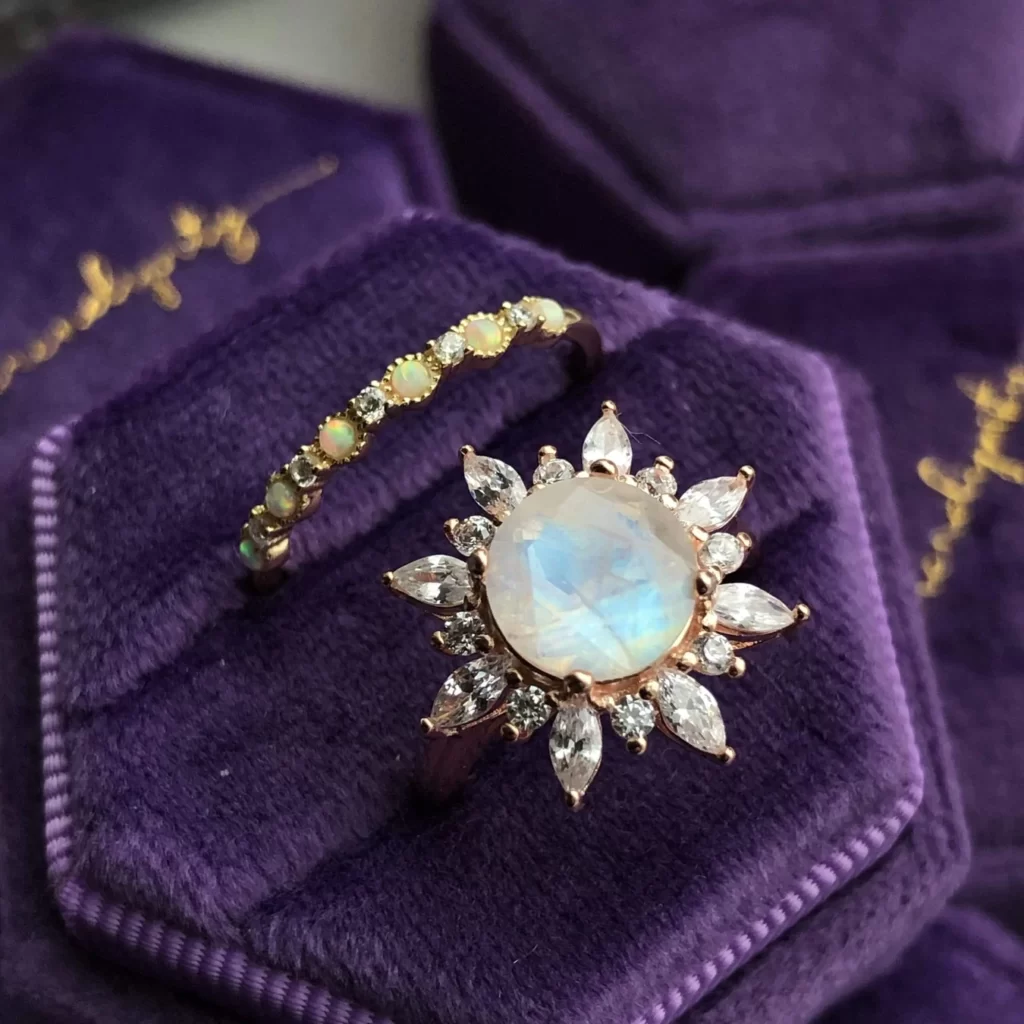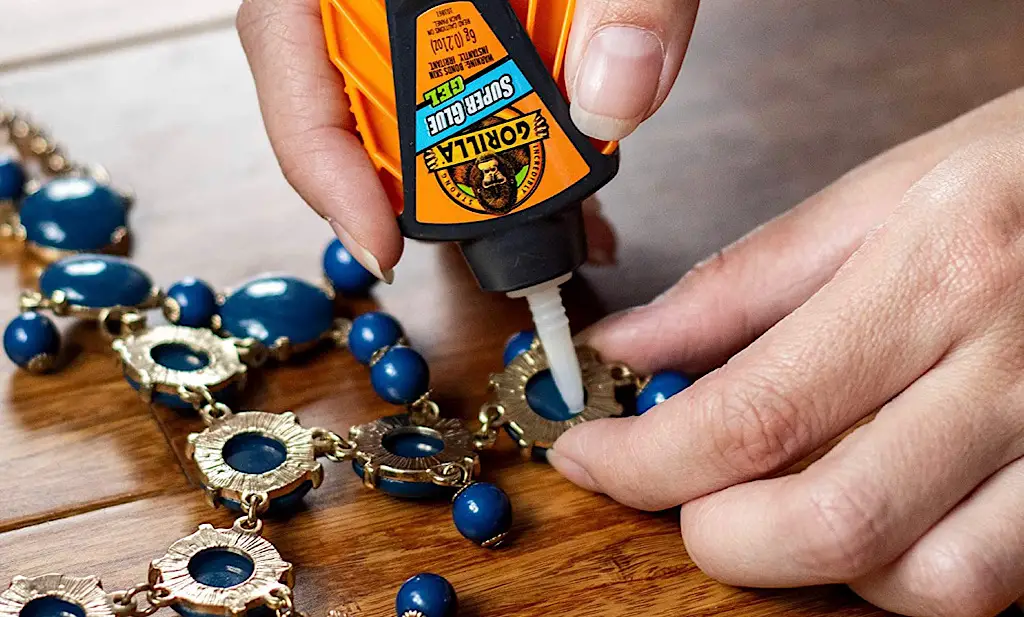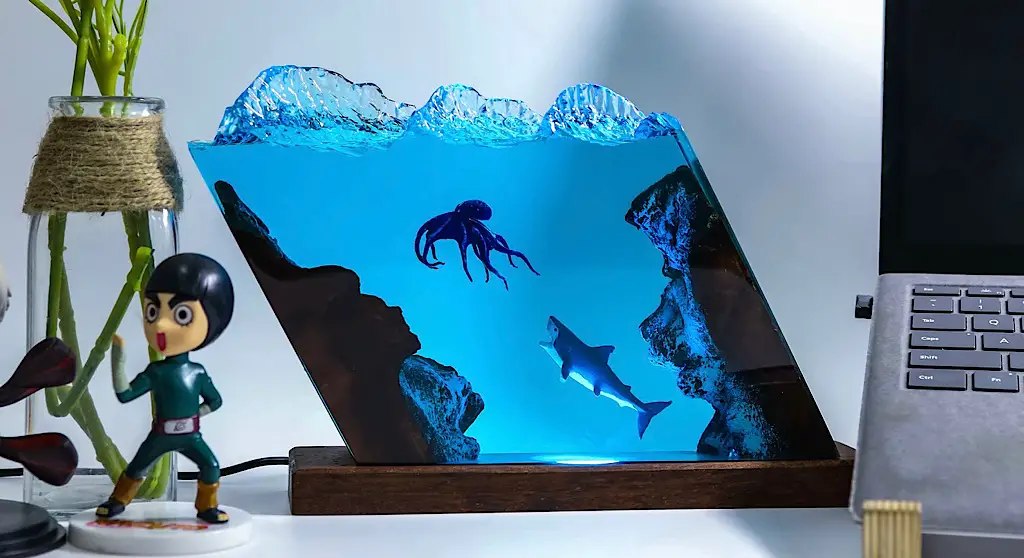When you purchase through links on our site, we may earn an affiliate commission. Learn more...
19 Best Tools & Supplies for Jewelry Making | A Complete DIY Guide
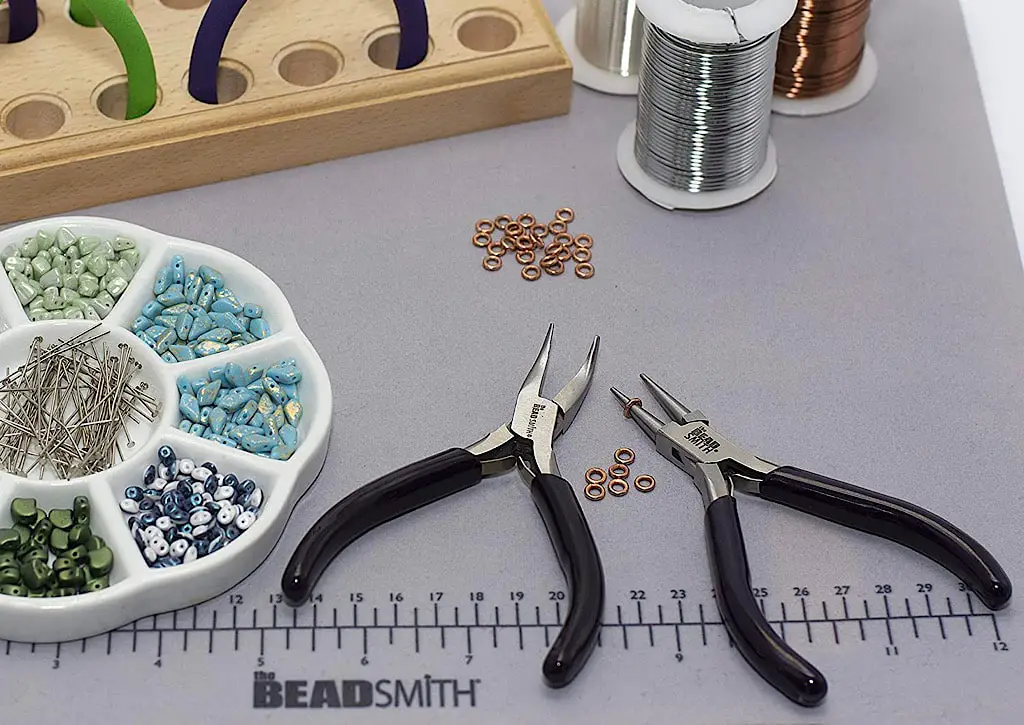
Jewelry-making is a craft that can be very rewarding. You get to do something creative and you get to wear your own creations. It is a hobby that many people enjoy, but it can also be turned into an income-generating business.
Jewellery can be made from all kinds of materials, including metal, wood, stone, fabric, and glass. There are also lots of different tools you need to use.
Here’s a list of 19 handpicked tools that are considered the best in their categories by fellow jewelry-making enthusiasts and professionals.
1. Scissors
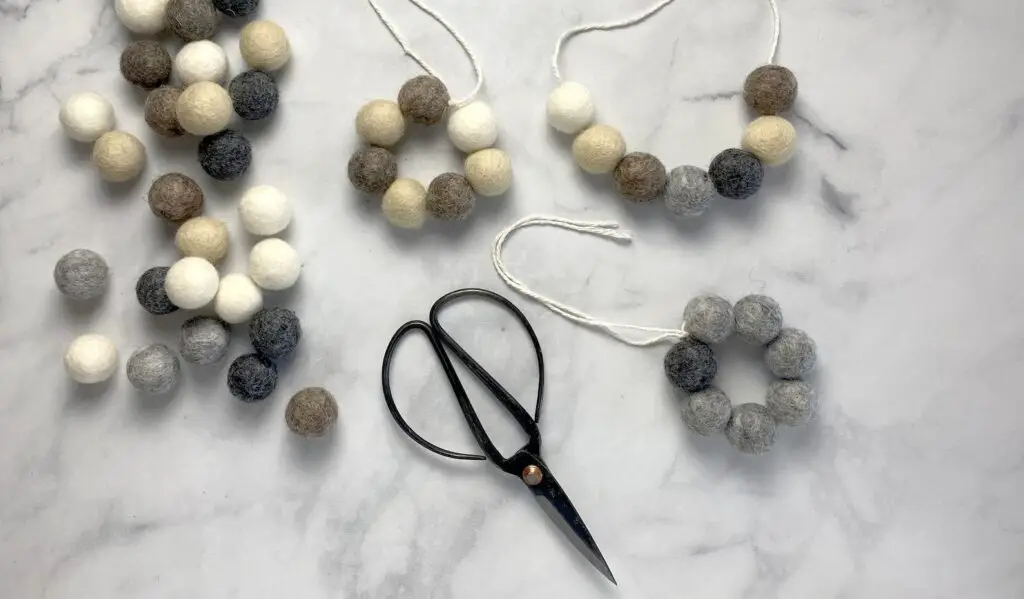
Scissors are used in the jewelry-making process and are a necessary tool when you are cutting metal, thin wire, or other pieces.
They come in many different shapes and sizes and can be used for specific jobs. You may want to consider purchasing a pair of scissors for your toolbox.
There are 3 main types of scissors that are used in jewelry, however, depending on the material you work on, you may use different types of scissors as well.
- Straight-edge scissors are commonly used for cutting cords, yarn or other materials.
- Textile scissors allow you to cut through thick materials such as fabric, leather, or plastic without damaging the edges of your material. The blade appears to be tilted towards one side. That shape makes it easier to cut fabric which requires a specific position of the hand.
- Thread snips are mostly used for cutting threads; this is why you commonly meet them in sewing. If your jewellery-making process requires sewing, consider having one of these in your kit.
2. Nylon-tipped pliers
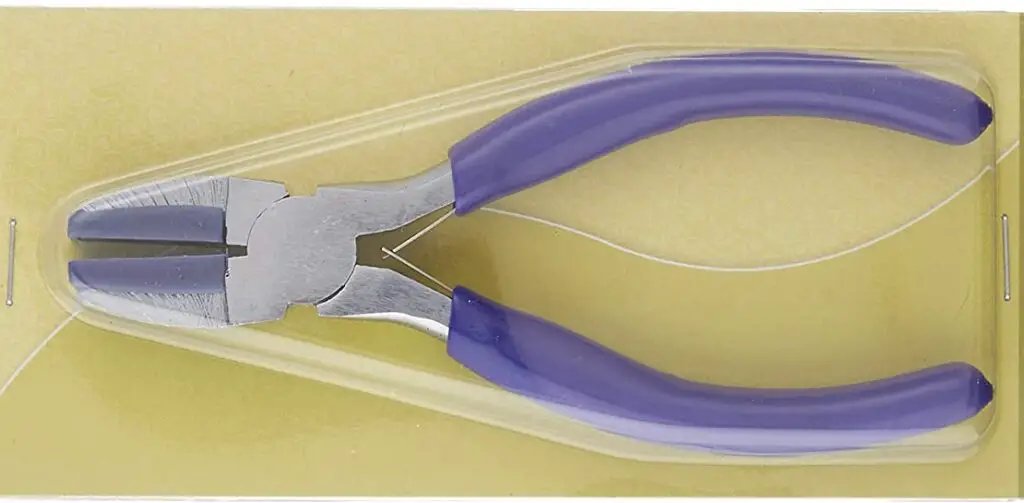
Nylon-tipped pliers are different from standard pliers because they have a nylon coating on the tips, making them non-magnetic. They are used for shaping soft wires such as copper and aluminum without damaging them.
They also have a soft grip, which makes them comfortable to hold, even when you are working on intricate designs. These pliers come in a variety of shapes and sizes.
3. Practice Material
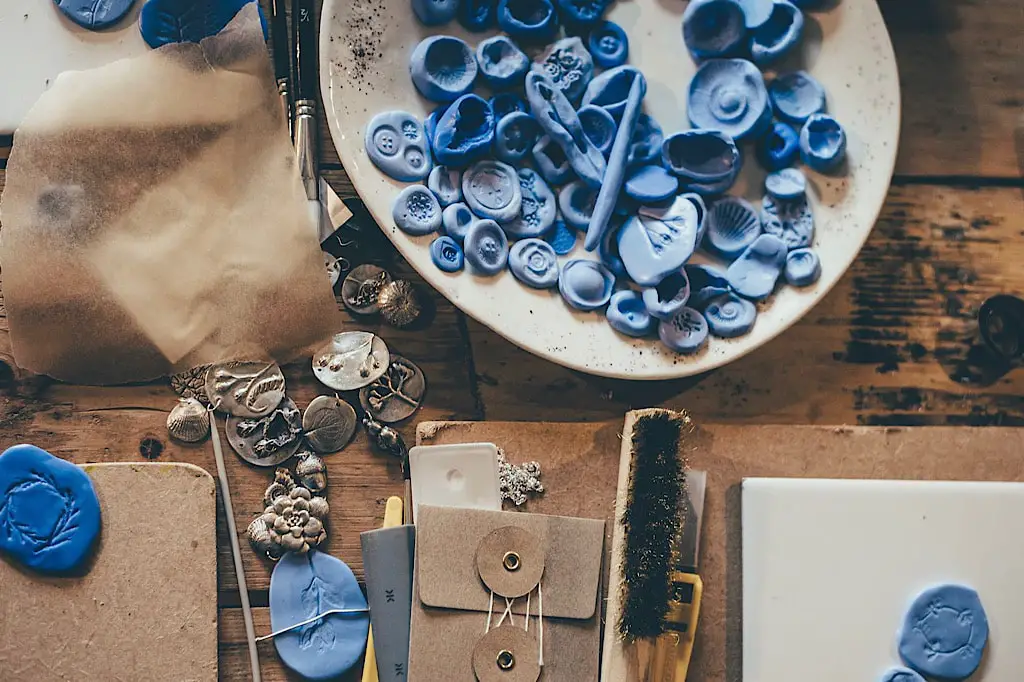
Using practice materials will allow you to know what materials are best suited for specific projects and which ones are not. It gives you an opportunity to try out different techniques and designs during your first few attempts at making jewelry pieces before working on the final material of choice.
It is advisable that anyone who wants to make jewelry should consider having practice materials on hand, especially if your pieces are going to include precious gemstones on them.
There are many types of practice materials available in the market such as acrylic pearls, resin gemstones, glass beads, metallic beads, and acrylic diamonds and rhinestones, which you can acquire for a fairly low price.
Additionally, two popular practice materials are clay and polymer clay. These two types of clays are the most commonly used materials by people who want to create metal jewelry. You make the design on the clay/polymer clay, make a mold with it, and then you can cast the metal of choice to create your jewelry piece.
They both have their own benefits. Polymer clay requires baking. It comes in different colors like white, black, yellow, etc., but if you want your project to look like real gold or silver then you should gild it with gold or silver leaf sheets.
Clay on the other hand has several different types. Air dry clay is the easiest to use for practice as it doesn’t require baking at all. You can use it just like polymer clay but shaping it requires some water unlike polymer clay. You can say clay is a sort of “messier” material to work with.
4. Soldering iron kit
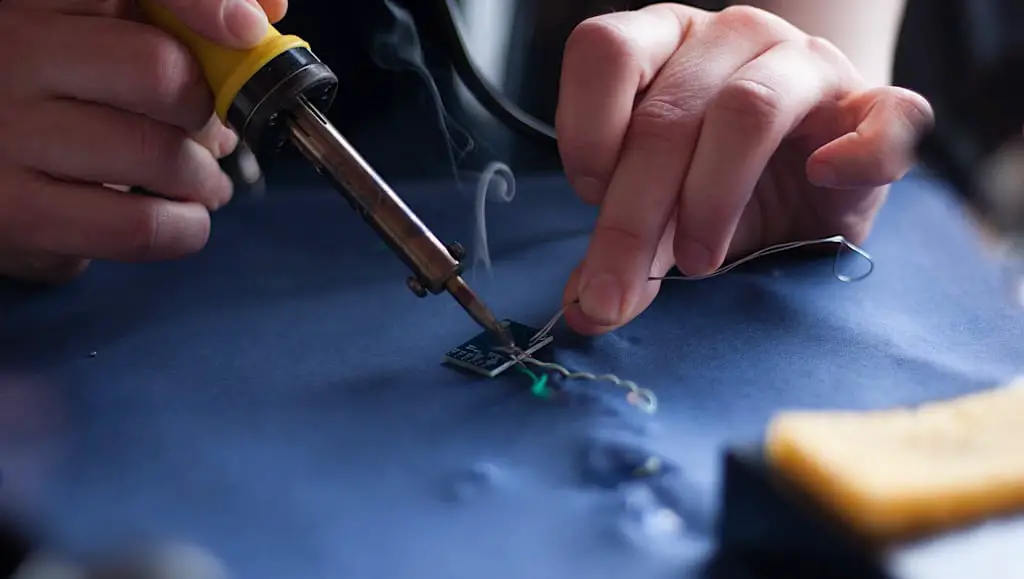
A soldering iron kit is an essential tool for jewelry making. This tool provides heat to melt metal together so that it can be shaped into the desired design. It is also used to easily remove the excess mesh fabric from embroidered laces.
The kit includes all of the necessary equipment needed to solder metal together such as solder wire, flux, the electric soldering iron of course and so on, depending on the kit you purchase.
The soldering iron comes with an assortment of tips that allow you to do different types of jobs like creating jump rings, burning fabric edges to prevent fraying, joining metal pieces as previously mentioned, and working with wire in general.
When using this tool, it is advised that you follow all safety precautions just like when using any type of flame or heat source such as wearing protective gloves as the tip can become really hot (to the point it melts metal if that explains it better).
5. Ruler
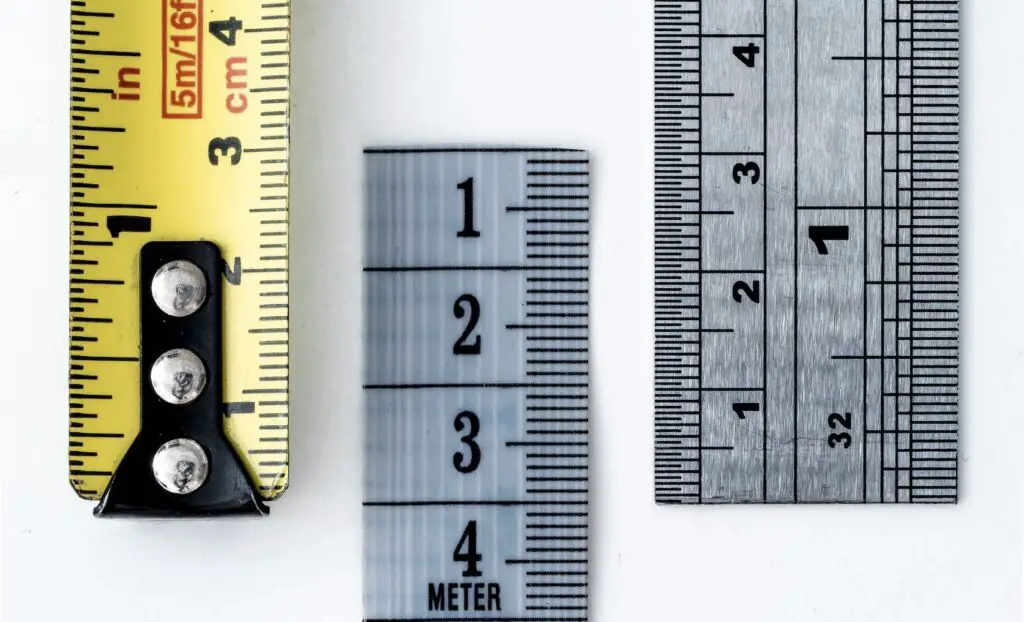
One of the most important tools that should be in every jeweler’s toolbox is a ruler. One of the most common uses for rulers in jewelry making is to measure the size of stones. This ensures that your stones will fit into any new setting you may purchase or create for them such as filigree ornaments, etc.
Another way rulers can be used in jewelry making is when designing bracelets or necklaces with multiple strands of beads or gems.
Using a ruler will help you keep track of how long each strand needs to be so that it fits perfectly on your customer’s wrist or neckline without being either too loose or too tight (both of which could cause irritation).
6. Wire cutters
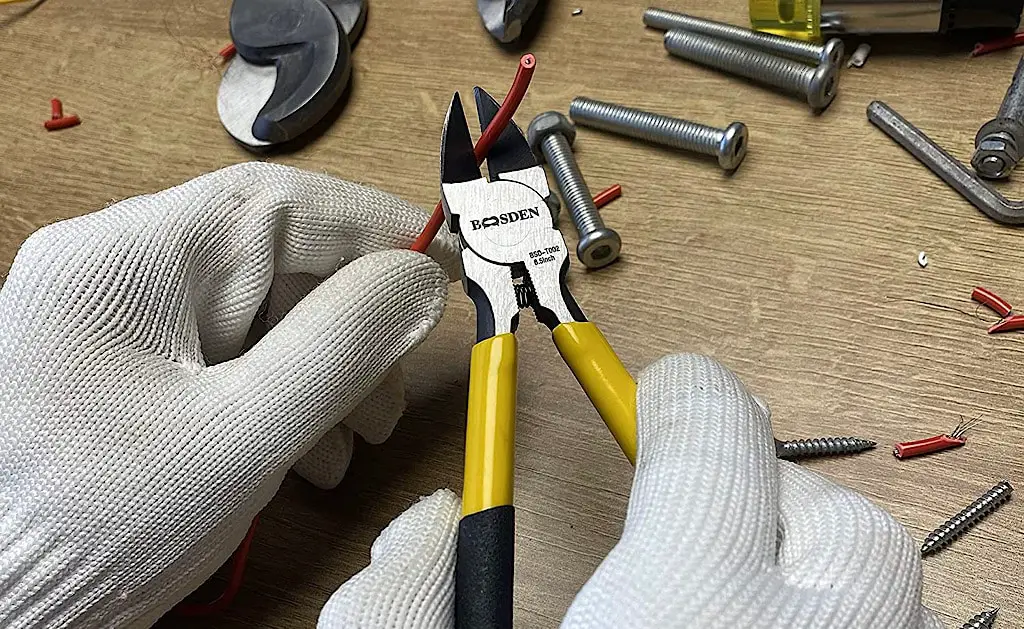
Wire cutters are used to cut wire, especially of thicker sizes. There are many types available on the market, but they all share the same purpose. They are used to cut wires into smaller segments so that you can use them for different jewelry-making projects.
The cutters are made of stainless steel, iron or titanium but avoid iron ones as they rust over time. The handles are made from a soft, anti-slip material, which makes it easier for you to hold them while cutting.
They can easily cut copper and aluminum wires as well as harder metals like steel (garden) wire, gold and silver, but they can also cut cables if you make more intricate designs.
When making jewelry, it is important that you use this tool because it will make the process much easier than using scissors, for instance, to cut thicker wires. Thicker and harder wires will destroy your scissors and you won’t get the desirable result.
Using this tool will ensure that your jewelry pieces look professional and neat which is always very important when selling them online or selling in person at a flea market or even in a craft fair event.
7. Chasing hammer
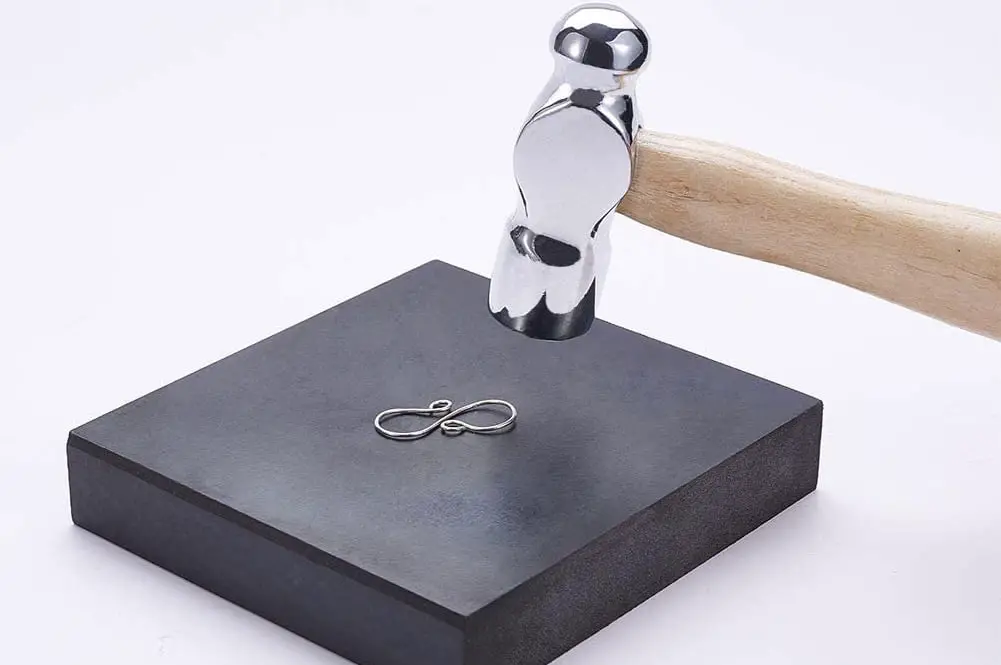
Chasing hammers are used to make a metal surface smooth and even. They are also used to work down dents, flatten edges and make other refinements on metal pieces before they are soldered together.
They are a type of hammer with a ball or square head at one end and flat at the other, but it is also common to have a tapered end on the opposite side. Chasing hammers come in various sizes and weights so keep that in mind when purchasing one.
There are many of these available at different price levels, so if you are just starting out in jewelry-making, then you should try some cheaper models until you know what type of hammer works best for your needs.
8. Round-nose pliers

Round-nose pliers are an essential tool for any jewelry maker. They can be used for a wide variety of tasks, from holding metal while hammering or soldering to forming wire into loops or shaping metal for setting gemstones.
They have jaws that are round, creating a rounded bend in whatever you are working on. They can be used to make jump rings, loops or bends without leaving rough dents on the wire; especially when working with soft wires (aluminum, copper). They will also protect delicate materials like fine silver.
The jaws of round-nose pliers are made out of either steel or brass, depending on the manufacturer and the price point of the tool.
Steel jaws are typically cheaper but more likely to rust if not properly cared for, just like the wire cutters mentioned above.
Brass jaws tend to cost more but last longer than steel ones before they begin to rust or show signs of wear and tear.
9. Bail-making pliers
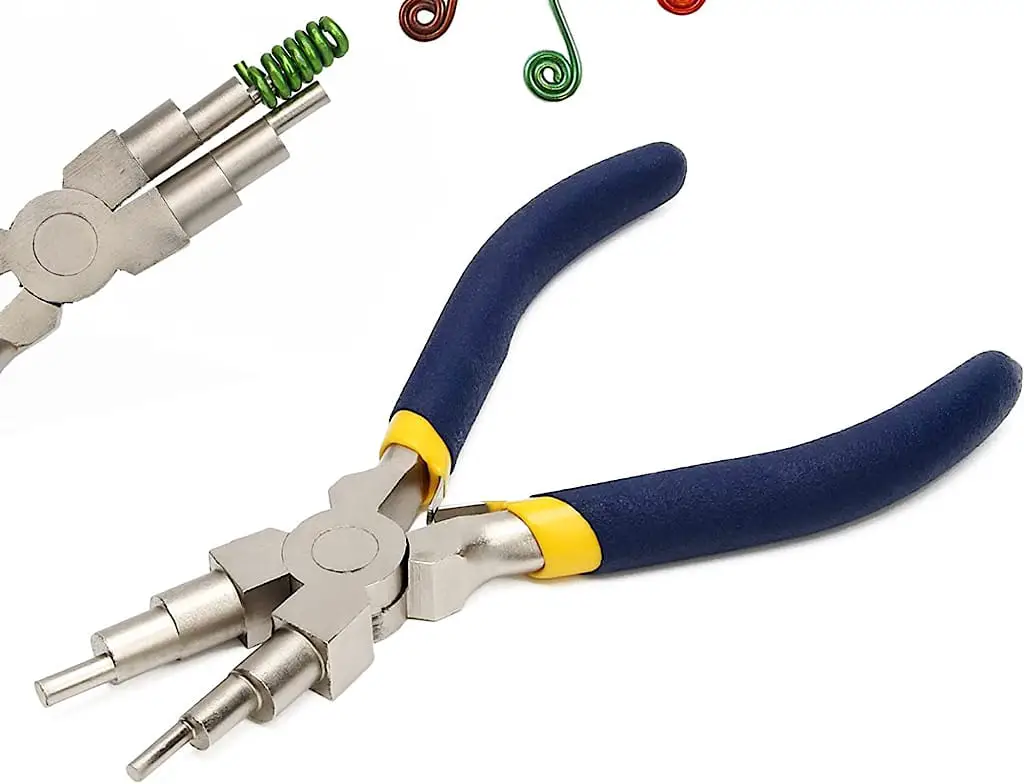
Bail-making pliers are a special pair of pliers that are used to make bails and coil shapes. The bails are the parts on the end or on top of some pieces of jewelry (pendants or bracelets) where you can joint jump rings and chains or cords directly (a knot for example) with the main part.
This tool allows you to make your own bails for your jewelry designs instead of having to purchase them from a store or online.
These pliers have straight jaws. The jaw tips are rounded instead of pointed so they won’t scratch the metal or leave marks on it as you’re working. Each jaw has 3 different size levels so you can adjust the size of the bail to match your project.
The bail-making pliers come in different shapes and sizes and are made from different materials. They can be found at most craft stores or online stores such as Amazon.
The first thing you need to do when using this tool is to decide what type of metal you want to use for your bail. There are many different types of metals that you can use including brass, copper, bronze, silver, gold and aluminum.
10. Mallet
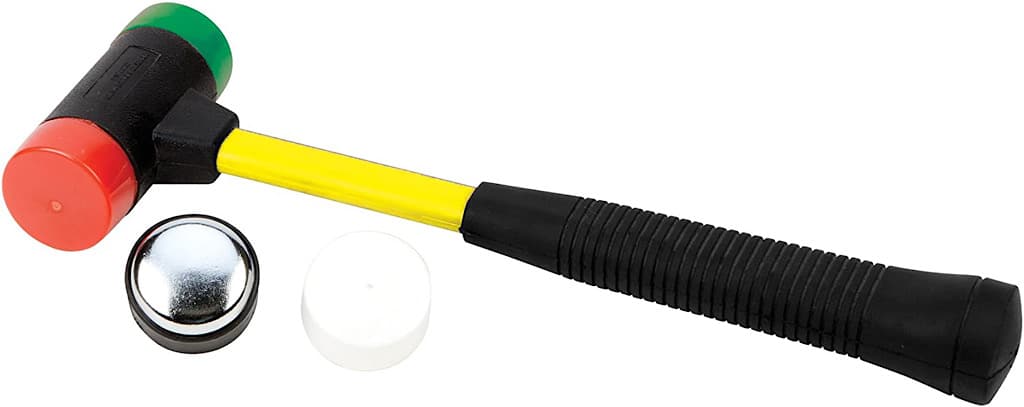
In the world of jewelry, a mallet is often used to strike metal while it’s being shaped or formed. It can be made out of wood, but it’s also available in plastic and various metals.
You can even purchase a mallet with a rubber head for working with softer materials. This tool is usually sold together with a rubber brick or pad which will protect the piece you are working on from striking on the rough surface of your desk or table.
You can even purchase replacement tips of different colours, materials and shapes. The tip can sometimes have a half ball shape which is perfect for bending metal on specific points only.
11. Measuring tape
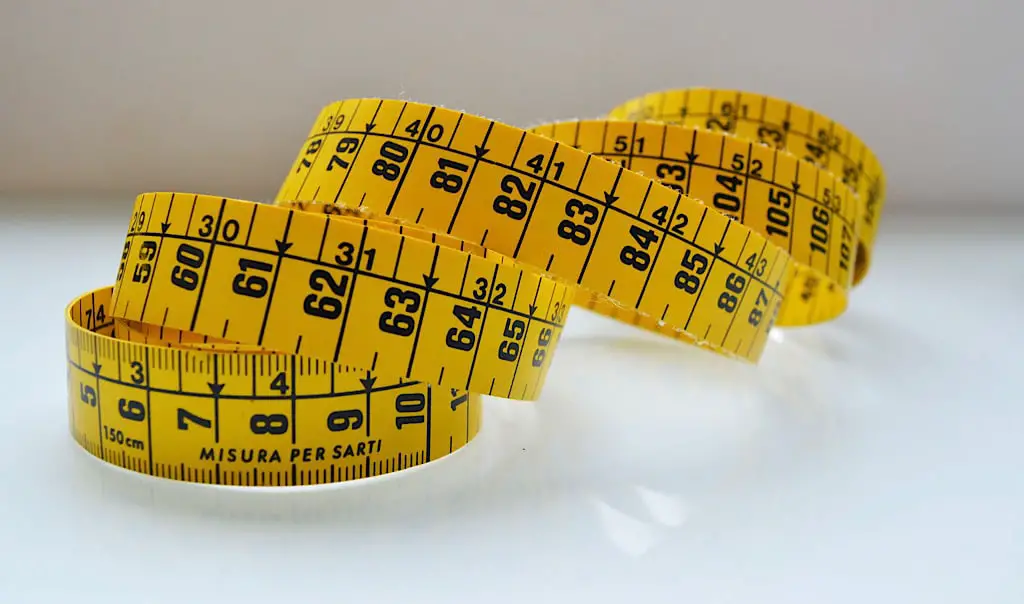
Measurement tapes are used in jewelry-making to measure the length of necklaces and bracelets or fabrics, etc. It’s very similar to a ruler only is is made of fibres and it’s bendable. For that very reason, they’re also used to measure the circumference of rings, or the width of earrings.
If you’re just starting out on jewellery, it’s best to get a standard-size measurement tape (100 or 150cm) so that you can use it for most types of projects. They are longer than regular rulers but shorter than retractable metallic measuring tapes.
However, if you find that your projects require more precise measurements, then you might want to invest in a more expensive one that has smaller increments marked on it.
12. Bead reamer
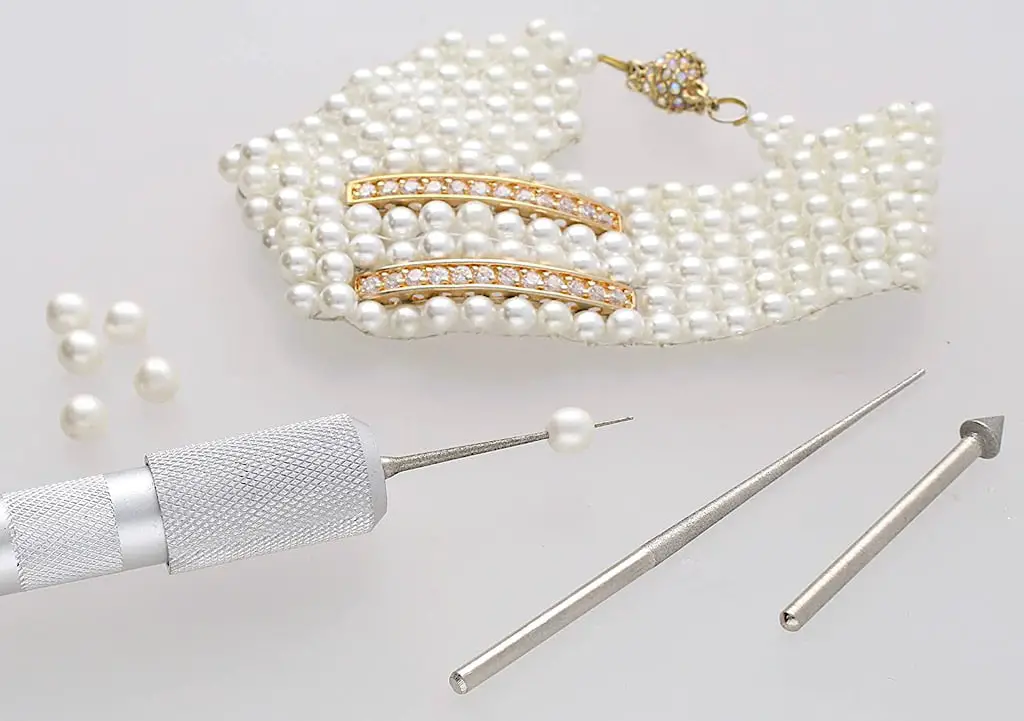
A bead reamer is a tool that is used to enlarge an opening in a bead or gemstone. It has a tapered tip that allows you to make the hole larger without damaging the surface of your bead. It consists of two parts, the handle, and the blade.
The blade has a round and rough shape, and it tapers inward from one end to the other end. The handle has a hole in it where the blade fits into.
This tool can be used for many different purposes. For example, you could use it to make sure that the opening of your pendant or bracelet is large enough for all of your beads to slide through easily.
You could also use it to widen the holes in your soft metal elements (aluminum or copper. It won’t work on filigree ornaments, and it may damage your tool.) so that they can accept wire, bails or jump rings. However, for this last part, I recommend using a hand drill instead.
Bead reamers are typically made from metal or wood (the grip only), and they come in different sizes and shapes depending on what kind of work you do. You can also find them in different materials like plastic.
13. Flat-nose pliers
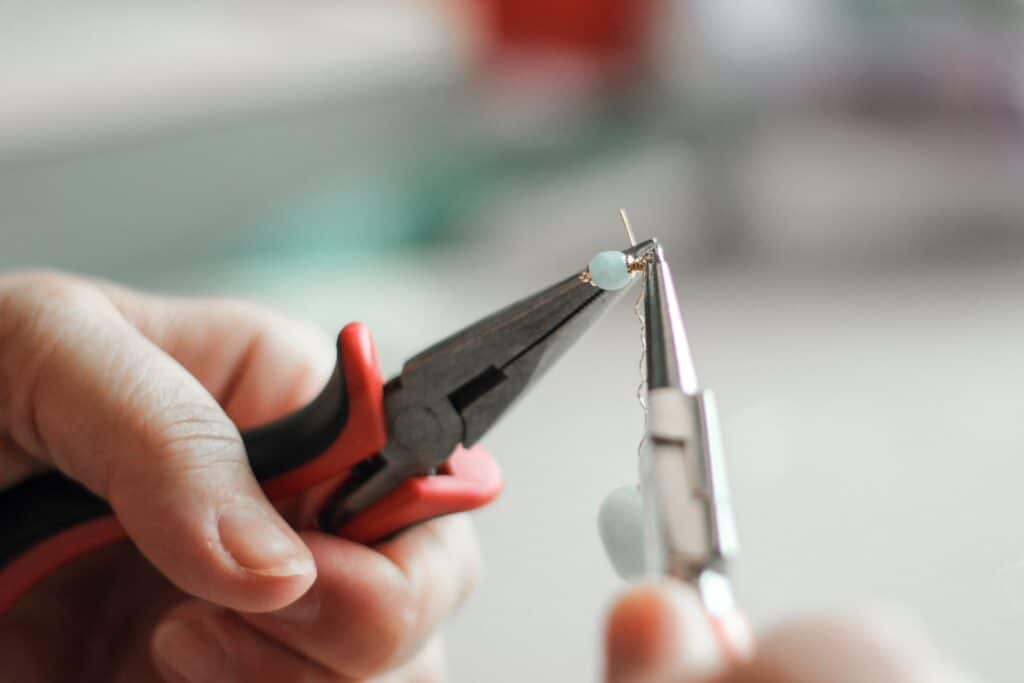
Flat-nose pliers are a pair of small, flat-ended pliers designed to grip and hold objects. These pliers come in many sizes and shapes, but they all allow you to grip wires that are coiled tightly and hold them with minimal effort so that you don’t damage your fingers.
They have flat, serrated jaws at the end of their handles instead of the round jaws found on round-nose pliers which is what makes them distinguishable.
Flat-nose pliers are often used as an alternative to jewelry-making tools like needle-nosed pliers or round-nosed pliers because they can grab onto small objects more easily than other tools.
However, use them with caution as they can create dents on wire (personal experience with them). They’re also good for gripping things like jump rings, which don’t always fit well into pinch grips or bent nose grips.
14. Chain-nose pliers
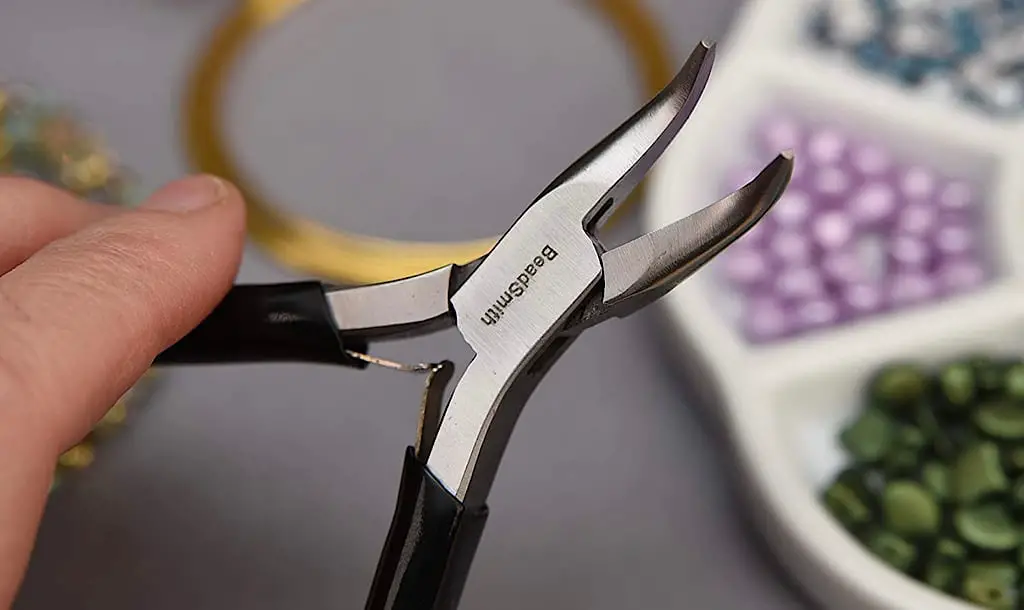
There are 2 types of these pliers, the chain-nose and the bent chain-nose. Chain-nose pliers are used to hold, bend, and shape the wire. They’re also good for gripping small items and holding them steady while you work with another tool.
The jaws on chain-nose pliers are usually smooth, but some manufacturers make them with serrated jaws instead. This feature is helpful if you’re working with hard materials like metal or glass because it cuts down on the friction of the material when you’re bending it into shape so that it won’t suddenly pop off the tool.
Bent chain-nose pliers are used for the exact same things as chain-nose pliers only they have bent jaws. You can also use them to make loops in the wire by squeezing one side of an open jump ring until it closes around a piece of jewelry hardware such as a clasp or earring hook.
15. Jeweler’s Saw

A jeweler’s saw is surely an important tool to have in your toolbox if you create your metallic elements from scratch. It can cut through different materials, from gold to silver and even platinum. It has a fine blade that is thinner and sharper than the blades of other saws.
These saws have several different teeth shapes available depending on what kind of material you need to cut through. A large number of teeth per inch (TPI) will provide a smoother cut in softer materials while fewer teeth per inch will provide a rougher cut in harder materials.
16. Bench vise clamp with spring-loaded jaws
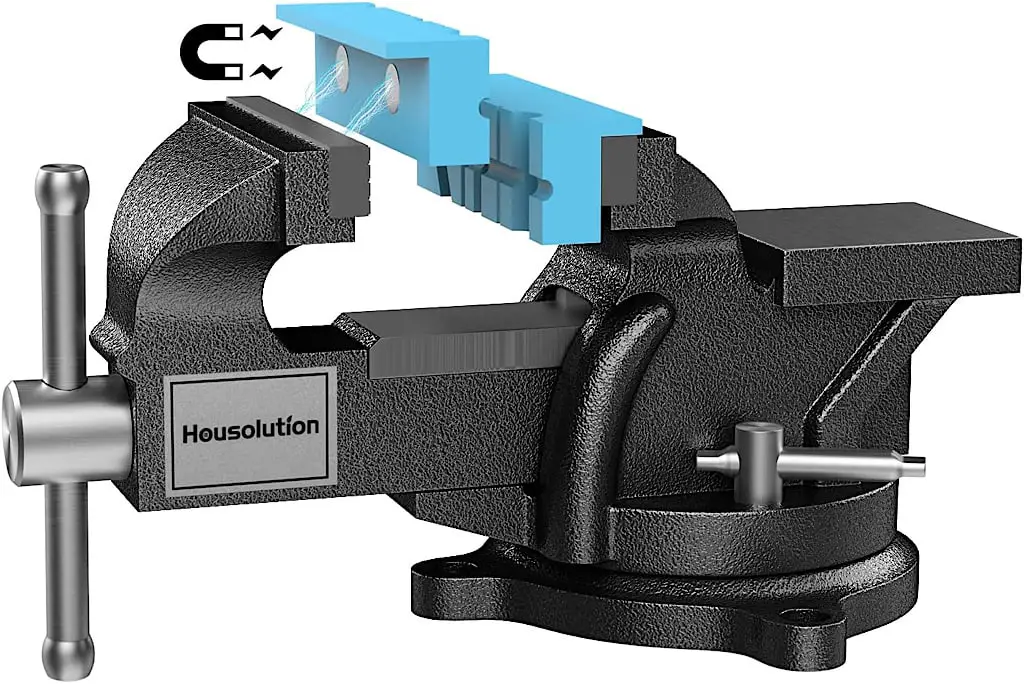
(This tool is mostly used by professionals so it’s not required for you to purchase it if you are a beginner).
The bench vise clamp with spring-loaded jaws is a small, portable vise that is used to hold an object steady for drilling and other metalworking or woodworking processes. The jaws can be opened and closed via a lever on the side of the clamp.
The jaw opening is adjustable, so you can set it to hold any size of jewelry piece in place. You can also use it as a stand for holding your workpiece during soldering or brazing work.
It’s important to use this tool when holding items that may be damaged by pressure — such as glass or ceramic tile — because they do not have enough elasticity to withstand being squeezed by force.
When using a bench vise clamp, make sure that it doesn’t have any sharp edges or points that could scratch your project. And make sure that all parts are clean before use, and keep the handle clean of oils from your hands so that it doesn’t slip out of your grasp during use.
17. Polishing cloth
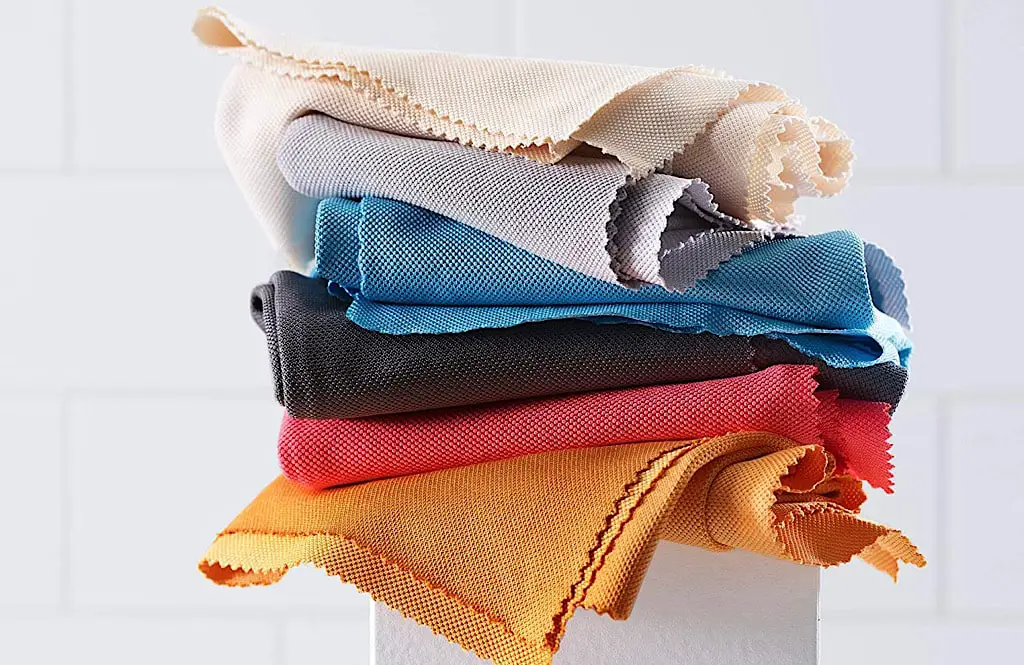
A polishing cloth is a soft, lint-free cloth that is mainly used for polishing jewelry. They are made of cotton, silk, or microfiber and are available in different grades of fineness. The higher the grade of fineness, the finer the weave and threads which is ideal for fine metals and gemstones.
Polishing cloths can also be used to remove oils from the surface of your jewelry. But to avoid letting more oils on them, you should wear jewelry-making gloves while polishing.
18. Lathe Machine
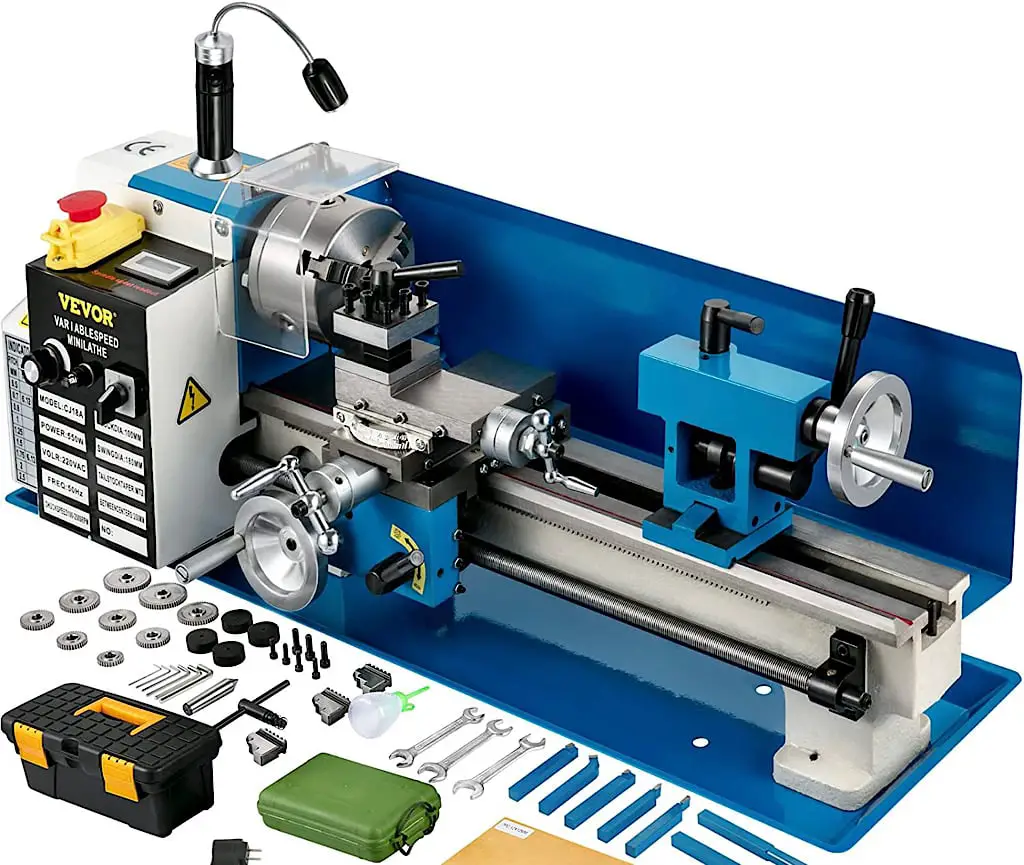
(Another optional tool that’s mainly used by professionals. You should get this if you want to take the next step in jewelry making.)
A lathe machine is a tool used by jewelers and metalworkers to shape metal, wood, or plastic. A lathe consists of a motor that drives a chuck holding the material to be shaped. It is similar in operation to a drill press but with the ability to rotate the workpiece.
The lathe machine comes in many sizes and shapes. You may see them as small desktop models (like the one in the image above) or large industrial machines that take up a room by themselves.
The most common use for these tools is to turn raw materials into finished products like jewelry and wooden furniture. The lathe machine uses spinning wheels to spin the material around while you work it with tools to carve out the desired shape.
Jewelry makers use lathes to turn raw metals into jewelry. They start by taking raw metal bars and turning them into round cylinders with spinning wheels on both ends of the cylinder (called “heads”).
From there, they can drill holes through each end of the cylinder before shaping it into whatever design they want using different tools like chisels or drills in addition to sanding wheels and polishing wheels. At this point, they will also polish their piece until it shines brightly enough. It can also be used to shape and polish epoxy resin.
19. Drill
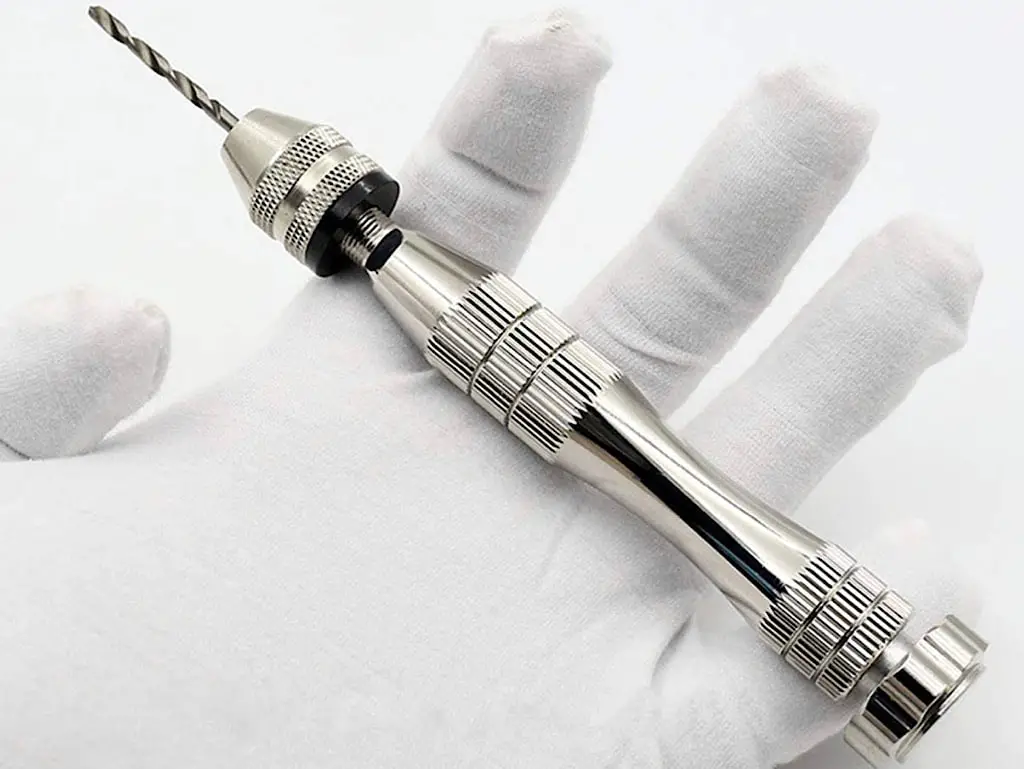
Having a hand drill is pretty significant in jewelry-making. It is used to drill holes in metal, wood, glass and other materials. This allows you to add things like jump rings, clasps, and other components to your designs.
Hand drills can be electrical, battery-powered or hand-powered (work by spinning it around with your hand). The most common materials that people use the first two drills on are metal, glass and wood. This is because they require more power and speed when it comes to drilling different shapes and sizes of holes.
The hand-powered drill can be used to make holes in soft wood, seashells, ceramics, fabric (such as leather), and other materials that require a more delicate approach as the pressure applied by the other drills can break those materials.
Conclusion
With so many different tools and supplies to choose from, jewelry-making can be an intimidating and confusing hobby(or profession)—which is why I put together this list of the 19 best tools.
There are some tools that I feel are essential for pretty much every artist, some of which are important for a large number, and others for more advanced jewelry makers.
No matter where you fall on the spectrum, however, you will be able to find something that will help improve your jewelry-making skills.
With the above list of tools, you can create more and different types of jewelry pieces as compared to other methods that may restrict your creativity.

